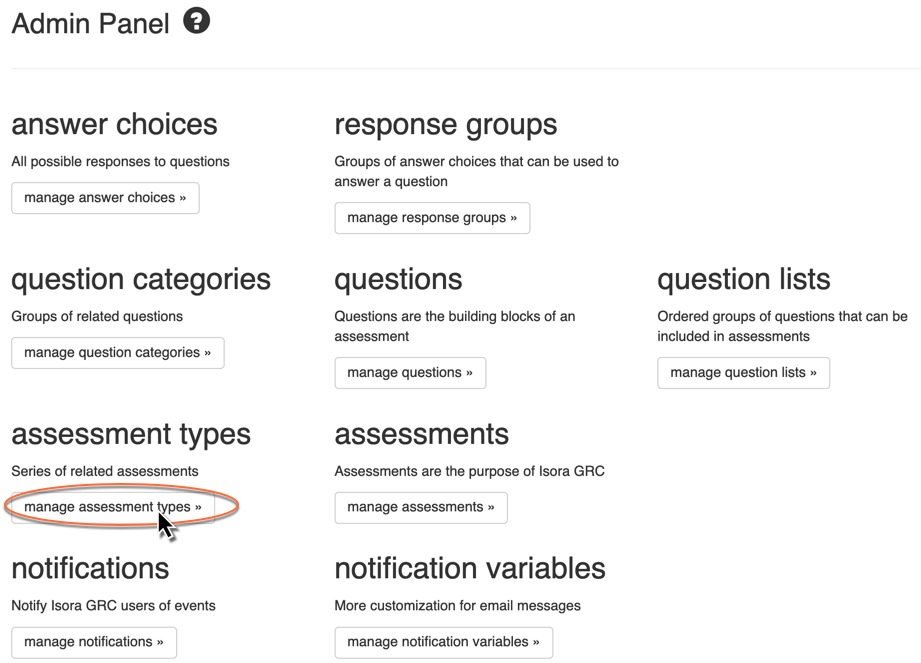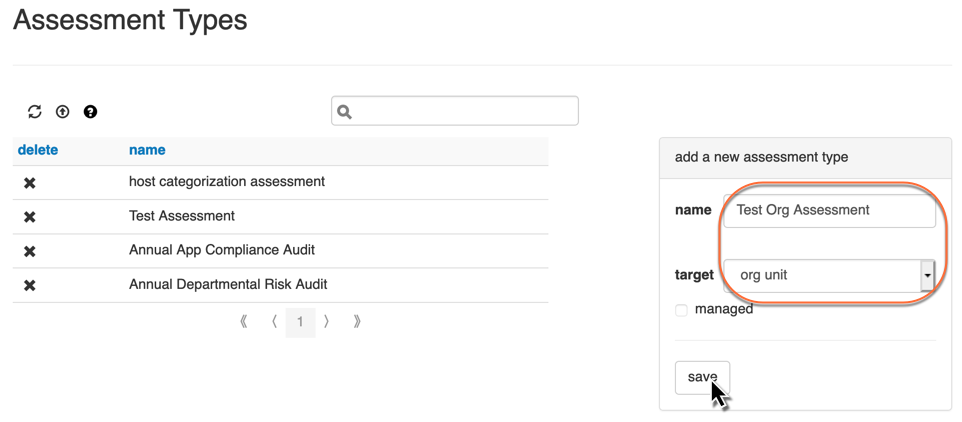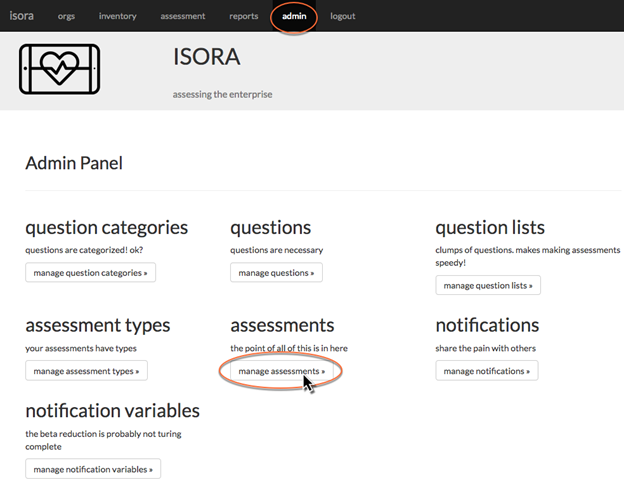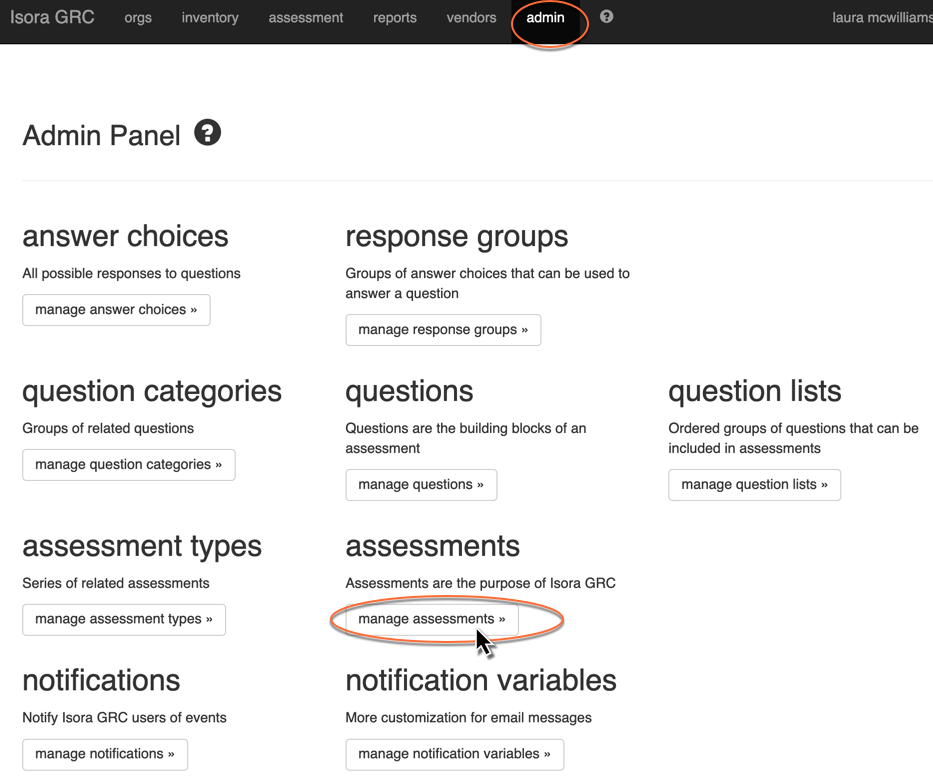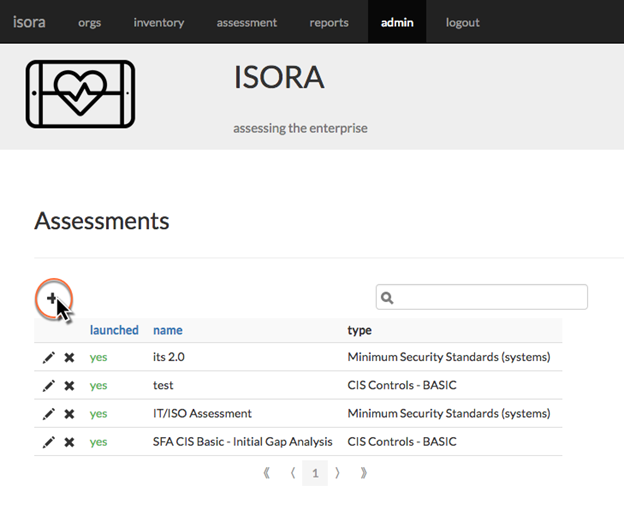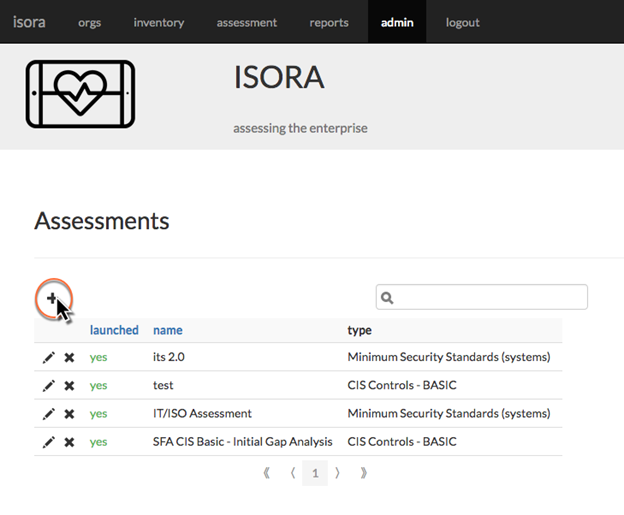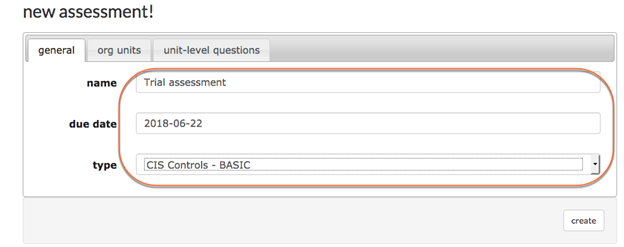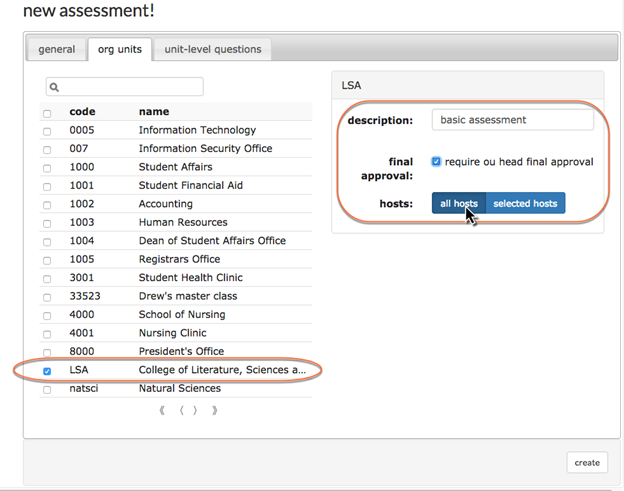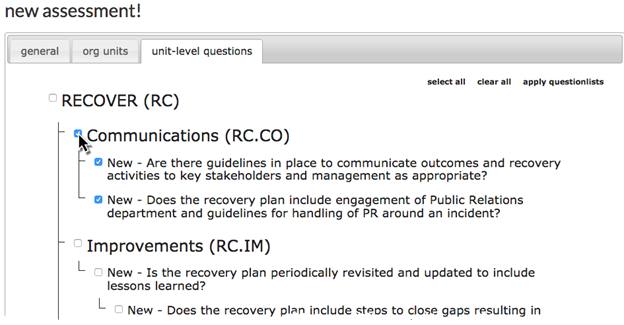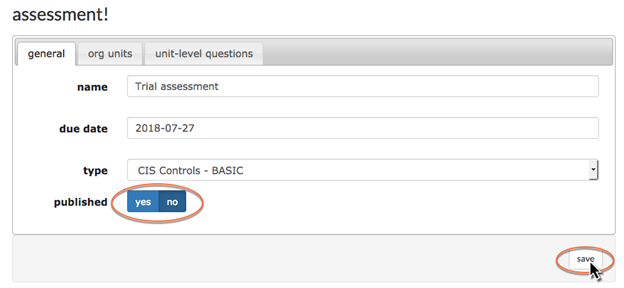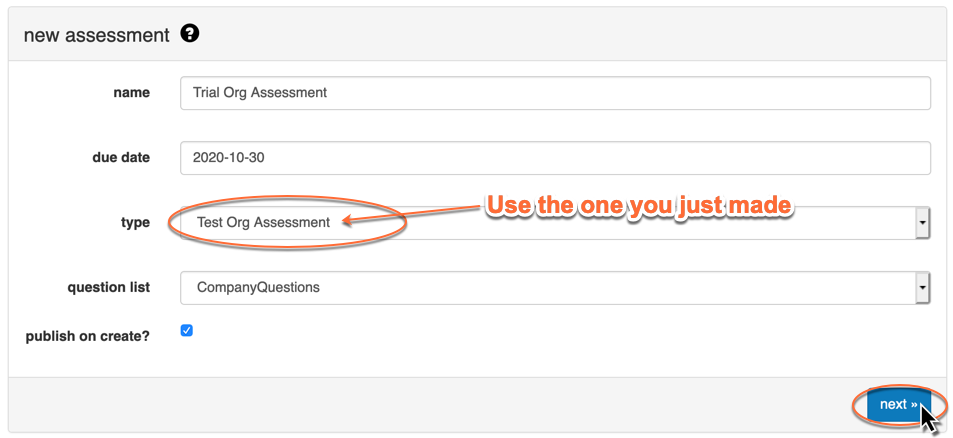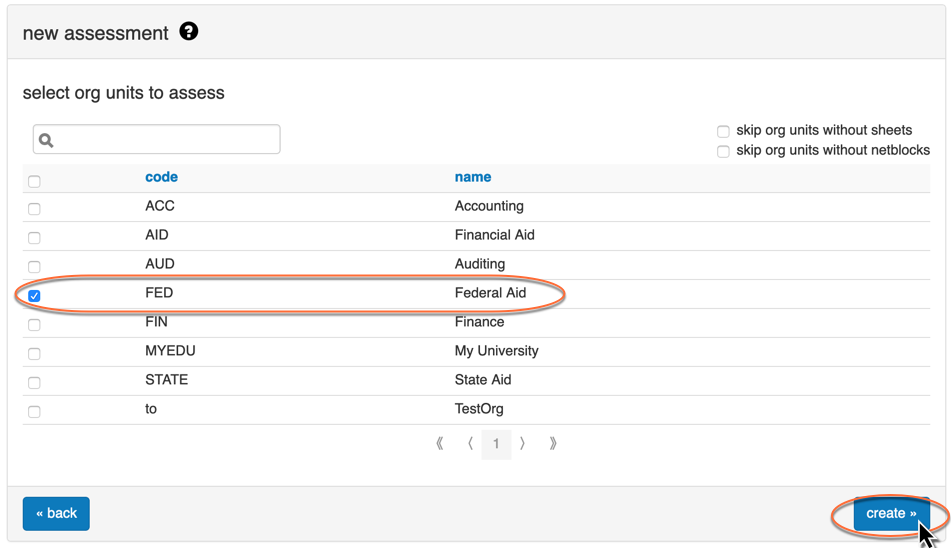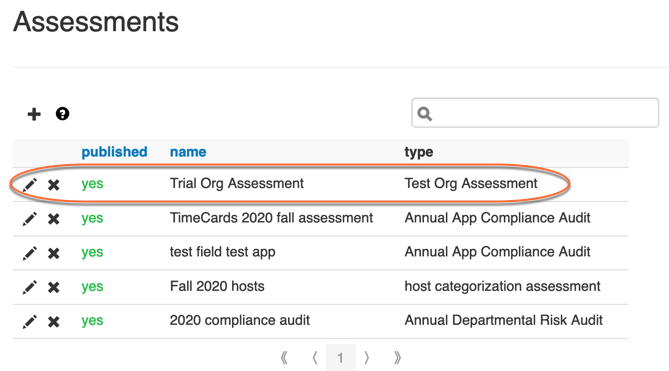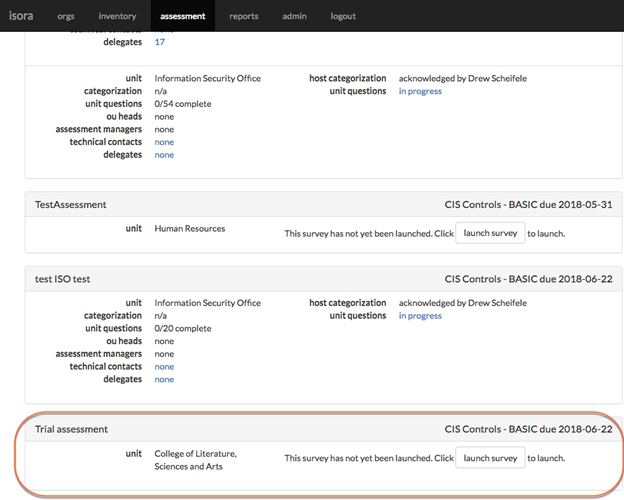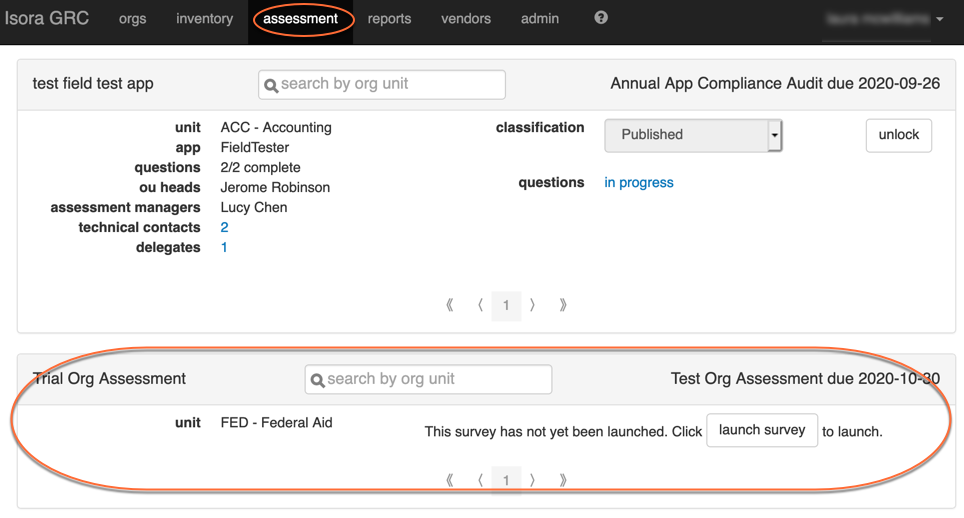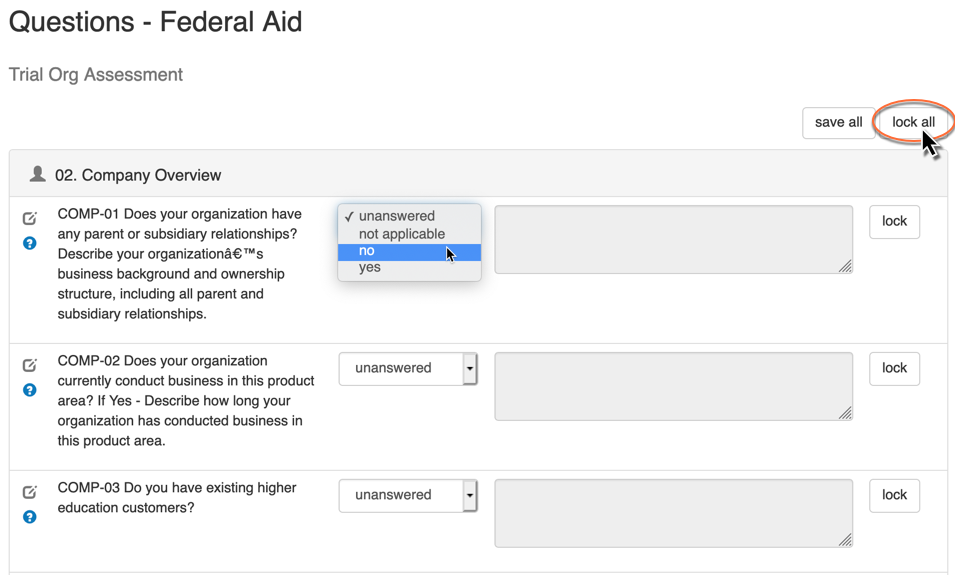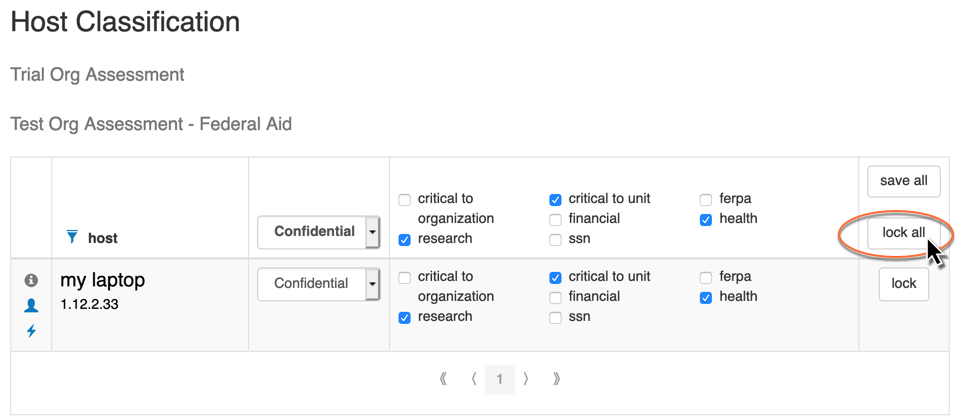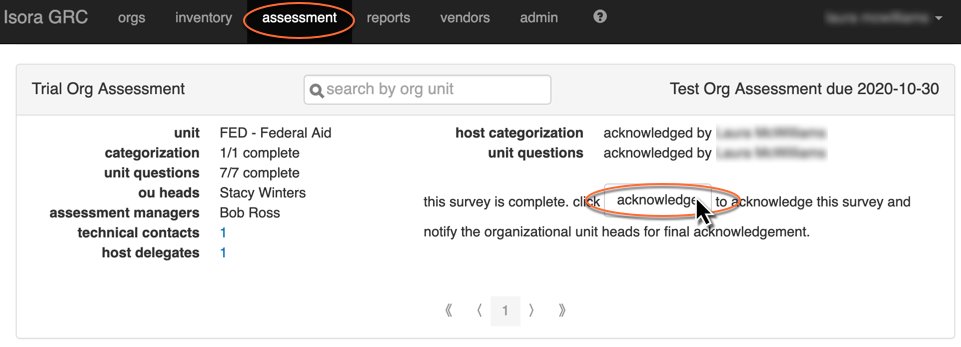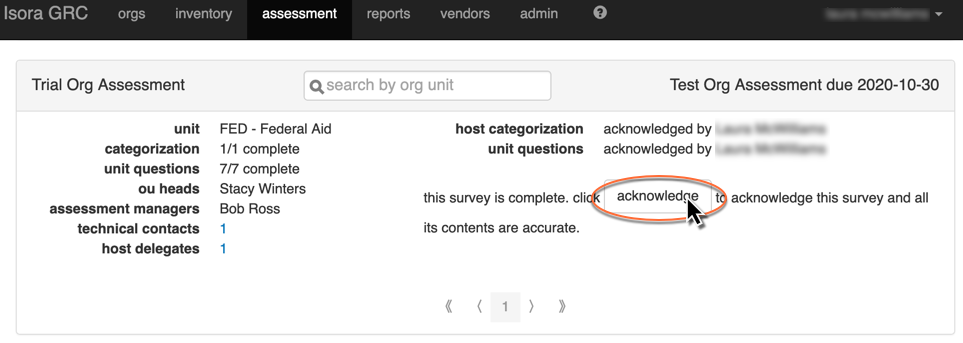Now that you have data about people and inventory in Isora GRC, you can get started with assessments. After viewing the video about creating organizational assessments, follow the steps below to perform a test organizational assessment.
| Iframe | ||||||||||||||||
|---|---|---|---|---|---|---|---|---|---|---|---|---|---|---|---|---|
|
...
You can follow these steps to perform a very basic assessment, then read consult the rest of the document this guide later to get more details about how to use each module of Isora GRC.
Start by accessing the admin module of Isora GRC.
Since you are doing a one-off test assessment (or the first in a new series of assessments), you should create a new assessment type. Click the “manage assessment types” button.
On the right-hand side, in the “add a new assessment type” box, assign a name and choose “org unit” as the target. Click the “save” button.
Go back to the admin panel by clicking the “admin” link. From there, click the “manage assessments” button.
Click the plus sign to add a new assessment.
Assign the assessment a name and due date, then choose an the assessment type you just created from the drop-down list. Your instance of Isora GRC may be pre-populated with a number of default assessment types.
Click the “org units” tab and use the checkboxes to select one or more organizational units which will be part of the assessment. As you click each one, a box which pops up on the right-hand side allows you to customize some aspects of the assessment for that organizational unit. By default, the survey which is going to be created will require final approval by the OU head and all hosts that belong to that OU will be included in the survey.
Click the “unit-level questions” tab to select unit-level questions for this assessment. The questions are grouped based on the types of assessments they are typically used for. Use the check boxes to choose one or more questions to include.
Finally, click the “create” button at the lower right-hand corner of the form. You can revisit the earlier tabs if you want to review your work before you create it.
Choose “yes” to publish the assessment and click the “save” button.
Based on the target type of the assessment type you choose, the question list drop-down is populated with choices. You should have at least one question list which was already created for you by SaltyCloud; if not, please read about how to create a question list here: 8.1.3 Working with question lists . You may want to use a very short question list since this is only a test assessment. Check the “publish on create” checkbox to publish immediately without making edits later. Click the “next” button.
In the next section of the dialog window, you can choose which organizational units to include in the assessment. For each OU you choose, a survey will be created based on the question list chosen in the previous step, and based on the sheets of hosts included in inventory for those OUs. Click “create” to create the new assessment.
Your new assessment should show up in the list.
Once you have published the assessment, it will also show up in the assessment If you do not publish it now, you can do so latermodule.
Now that the assessment has been published, each OU head or assessment manager can fill out or delegate surveys to complete the assessment.
In a real assessment, usually the assessment manager for each OU included in the assessment would click the “launch survey” button to make the survey accessible to be filled out. To test this out yourself, click the “launch survey” button, accept the default values in the survey launch window and click “launch”.
Before doing the next part of these steps, you should probably watch this video about completing organizational assessments (and notifications):
| Iframe | ||||||||||||||||
|---|---|---|---|---|---|---|---|---|---|---|---|---|---|---|---|---|
|
The assessment now shows both parts of the survey as “in-progress.” To access the unit questions or host categorization portion of the survey, click either of the “in progress” links.
To fill out the unit questions, choose an answer for each question and give an explanation where needed. When you’ve finished click the “lock all” button to indicate that all questions have been answered.
Once you have locked all answers, the “acknowledge” button pops up. Click it to complete this portion of the survey.
To complete the survey, you also need to fill out the host categorization portion. The answers may be pre-populated based on values that were used when the host(s) were entered into inventory.
You can change the individual answers if desired, or use the choices at the heading to apply the same values to all hosts on the survey.
Then click the “lock all” button to indicate all hosts have been classified. If no hosts belong to the OU, then you still have to click the “lock all” button.After all host answers are locked, the “acknowledge” button pops up. Click it to complete this portion of the survey.
Go back to assessment and click the “acknowledge” button to do a pre-final acknowledgement. Ordinarily, this step is done by the assessment manager for the particular OU, to trigger a notification for the OU Head to sign off on the assessment.
The final “acknowledge” button pops up. Click it to complete the entire assessment. Ordinarily, this step would be performed by the OU Head for that specific department.
The screen updates to show that the survey has been completed and acknowledged.
Next time you visit the assessment module, the assessment will disappear because it is completed. You can see the results of the assessment in the reports module.
To build more customized assessments, you will need to spend more time working in the admin module. The rest of this document Administrator Guide goes into more detail about how to use each module of Isora GRC.
Next: 3. Using orgs
| Page Properties | ||
|---|---|---|
| ||
|

